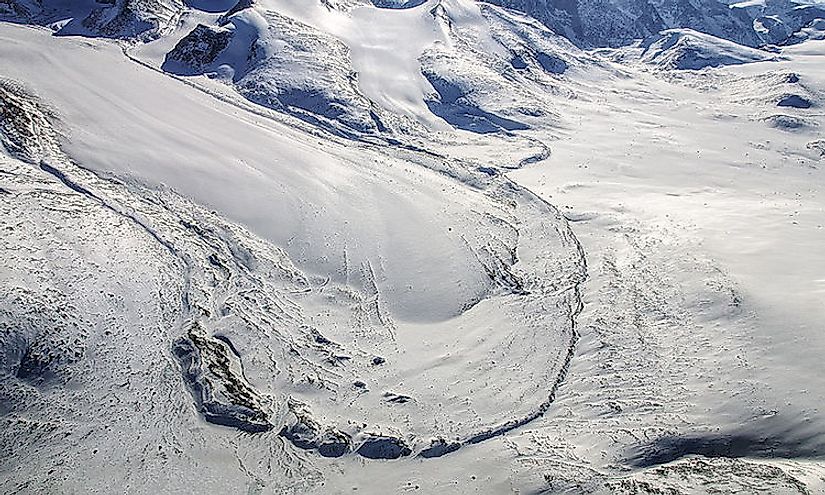Glacial Landforms: What Is A Moraine?

Glacial Landforms
Presently, about 10% of the earth surface is covered with glacial ice while the glacier stores about 75% of the world’s fresh water. Glaciers are moving ice and range in size from ice sheet to small patches. Glacier is formed due to the accumulation of snow on each other over a period. The moving ice or glacier can create landforms through processes such as erosion and deposition of sediments and silt. The glacial landforms may be as large as the Great Lakes or as small as mere scratches left by pebbles. Some of the glacial landforms include Cirque, arête, U-shaped valleys, drumlin, and moraine.
What Is A Moraine?
Moraine is a ridge or a mound formed by the deposition of till. It is formed by the accumulation of unconsolidated glacier sediments or glacier debris through the geomorphological process. Moraine is a material that is transported by the glacier then deposited. These materials range in size from large blocks or boulders to sand and clay. The materials are not stratified at the point of deposition by the glacier and show no sorting or bedding. The moraines can be formed on the side of the ice flow or at the foot or snout of the glacier and may be on the surface of the glacier and deposited where the glacier melts.
Formation Of Moraines
Moraine is formed through several processes depending on the characteristics of the sediments, the location of the ice or glacier from which the moraine is formed, and the dynamics of the glacier. Moraine forming processes are either passive or active with the passive process of forming moraine involving the placing of sediments onto a landscape with limited or no reworking. The moraines formed through the passive process are made up of supraglacial sediments from the ice surface. The active process of moraine formation involves the formation or reworking of moraine deposits directly by the movement of ice. Moraines are also formed by the accumulation of sediment deposits from glacial streams originating from the ice margins. The deposits may coalesce to form a moraine bank.
Types Of Moraines
Moraines are classified according to their origin, location and by their shape. However, some of the ancient moraines cannot be categorized because of they are poorly preserved and are also difficult to distinguish. Lateral moraines are parallel ridges containing debris derived by erosion and deposited on the sides of the glacier. The debris forming the lateral moraine can be filed on top of the glacier with the moraine being slightly higher because of the protection of the ice under them. Ground moraines are irregular blankets of till deposited on areas with irregular topography forming a gently rolling hill or plain. The deposits are either accumulated at the base of ice or deposited as the glacier retreats. A terminal moraine is made up of a ridge-like accumulation of debris deposited at the snout of the glacier. Terminal moraine reflects the glacier’s terminus and marks the maximum advance of the glacier. Recessional moraines are series of transverse ridges crossing a valley behind the terminal moraine. A medial moraine is formed when two ice meet, and the sediments joined and carried on top of the enlarged glacier. Other types of moraines include supra-glacial, washboard, and veiki moraines.











